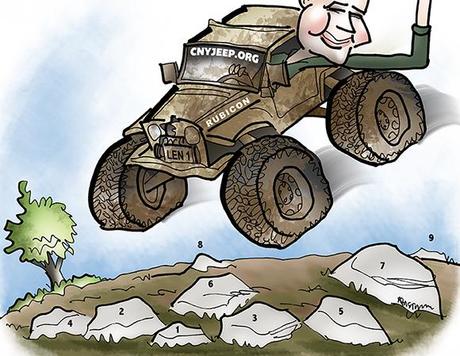Here’s a recent caricature I did for a Jeep enthusiast who heads up a club for Jeep lovers.
I just had this one photo to work from.

Here’s a detail image. Say, what’s that strange hand signal??

One of the great things about being a freelancer illustrator, is that you almost always learn something new with each assignment. This time around, I learned the shaka sign, which means “hang loose.” It comes to us via Hawaiian surfer culture. Am I the only one who’d never heard of it??
Photo below courtesy of Photolivier and Flickr.

I wanted to add shading to the left side of each rock, so I used the Pen tool to select them all individually, then saved the selections as “Rock 1,” “Rock 2,” etc. But how to remember which was which? See below for my ingenious solution.
The big challenge, of course, was remembering to hide the numbers when I was done… : )

The client requested the final as a vector file. I created the illustration as a bitmap file in Adobe Photoshop, then imported it into Adobe Illustrator and converted it to a vector file.
As mentioned in recent posts, a bitmap image is pixel-based, a vector image is path-based. Pixels allow for smooth gradations of color; there’s no clear dividing line between colors. In a vector image, paths define areas of various shapes. Each area contains a single color. Up close, you can see the little dividing lines.
I thought it might be instructive to include a comparison here.
At left: the original bitmap image with its smooth gradations. At right: the corresponding vector image. In the latter, you can see some of the paths and distinct single-color areas, especially on the cheek, lips, forehead, and coat sleeve. They look like the contours on a topographical map.

What do you think? Ever driven a jeep? Were you familiar with the hang loose sign? Ever had occasion to number rocks, frying pans, or other inanimate objects?? Hope you’ll leave a comment.

